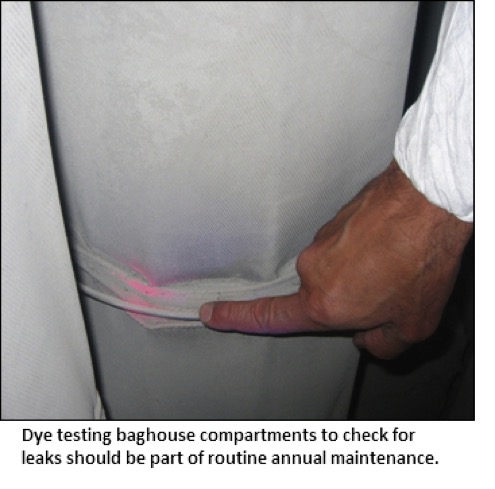Best Practices for Baghouse Inspections & Maintenance
As with any type of air emission control equipment, baghouses benefit from regular inspections as part of routine and preventative maintenance. Although by their very nature baghouses are less finicky than electrostatic precipitators when it comes to collection efficiency, problems not caught early can and do explode into crises when left unchecked.
Yet, baghouses tend to get inspected rarely–until something goes wrong.
“As long as the baghouse is running well, there’s a tendency to not bother with inspections,” says Jim Parsons, Senior Engineering Consultant at Neundorfer. “It’s common for nothing to be seen as a problem needing investigation until there’s a disaster.”
Because small issues can build up over time and create crises–like de-rate level opacity excursions–baghouse maintenance on a daily, weekly, quarterly and annual basis should include keeping an eye on some key parameters. Recommended inspection points and maintenance tasks are outlined below.
Daily Walk-Through & Maintenance
- Take pressure drop readings
- Check cleaning system performance (including compressors, dryer, filter)
- Check valve and damper operation
- Check dust removal system operation
- Check emission levels
Weekly Check-In & Maintenance
- Check diaphragm and solenoid operation
- Take differential pressure and Magnehelic line readings
- Check moving parts for wear/malfunction
- Take differential pressure (delta P) readings after a cleaning cycle (if increasing over time, indicates bags becoming blinded)
- Check compartment interiors visually for leaks
Quarterly Inspection & Maintenance
- Remove sample bags for permeability flow testing
- Check fan operation
- Replace any failed bags
- Lubricate high wear parts
- Clean tubesheets
Annual Inspection & Maintenance
- Perform dye testing of each compartment to check for leaks
- Inspect access door gaskets
- Inspect ductwork and hopper baffles
- Adjust dampers or valves
- Calibrate instrumentation
When inspecting baghouses, the goal of gathering information is to look for signs indicating three key problems and the timing of their occurrences: high opacity, high differential pressure, and short bag life.
For high opacity, early warning signs are mechanical leaks (e.g. tube sheet holes, bypass dampers not sealed) and broken bags (visibly see holes during inspection, dust on clean side of baghouse).
For high differential pressure, early warning signs are blinded filter bags and needing excessive fan power.
For short bag life, early warning signs are opacity spikes, dust on clean side of the baghouse (indicates broken bags) and need for excessive fan power early in bags’ service.
The daily, weekly, quarterly and annual inspection and maintenance program outlined earlier will uncover signs of impending baghouse problems and give the operator time to make corrections.
Helpful Resources
KnowledgeBase: Misconceptions Overview
Our Capabilities: Performance-Based Maintenance
Our Capabilities: Bag Life & Troubleshooting
Our Capabilities: Equipment Assessments & Inspections



